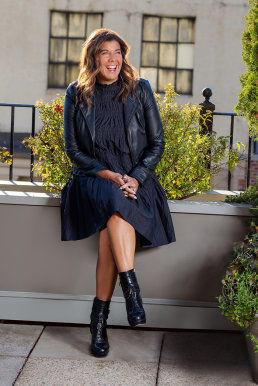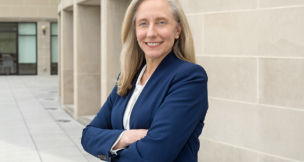After the crisis
Three years later, is support for DEI fading?
Gary Robertson //January 30, 2023//
During summer 2020, racial inequities took center stage in the United States as protesters took to the streets after the murder of George Floyd, a 46-year-old Black man, by a Minneapolis police officer was captured on video and widely disseminated via social media and news outlets.
Corporate America also responded, primarily through public statements vowing to focus on diversifying their workforces and especially C-suites, which have long been dominated by white men. Amid national grief and outrage, executives seemed open to discussions about race- and gender-related inequities in pay and promotions, as well as the whiteness of corporate boards.
Quite a few companies and other institutions hired diversity, equity and inclusion executives — some of whom were the first and only Black members of their companies’ C-suites — in 2020 and early 2021. According to LinkedIn, hiring of DEI officers increased by 84% during the 12-month period ending Aug. 30, 2020, and by 111% for the same period in 2021.
But nearly three years after Floyd’s killing, progress has stalled at some businesses and educational institutions, sometimes spilling out in public forums.
More than 88% of the 681 Fortune 500 and S&P 500 companies surveyed for executive search firm Crist | Kolder Associates’ Volatility Report 2022 continue to be led by white CEOs; the percentage is roughly the same for companies led by men. Additionally, a study released last year by Mogul Inc., a diversity recruitment firm, found that 69% of Fortune 500 board members are male, and 78% of Fortune 500 board members are white.
Meanwhile, DEI officers are averaging a three-year turnover rate, reports LinkedIn, and many companies do not report the demographic makeup of their workforces, making public accountability difficult or impossible to achieve.
“I see more businesses really refraining from speaking on DEI because it is no longer popular or advantageous for them. This, to me, is concerning,” says Narketta Sparkman-Key, associate provost for inclusive strategies and equity initiatives at James Madison University and formerly Old Dominion University’s director of faculty diversity and retention.
A recent CNBC report supports Sparkman- Key’s concerns about the regression of DEI initiatives.
Citing research from Glassdoor, CNBC reported that access to DEI programs nationwide surged to 39% in 2020 and peaked at 43% in 2021. In 2022, however, it dropped to 41%. “Many companies are starting to reorganize and find ways to cut costs, leaving progress toward diversity, equity and inclusion on the back burner,” a CNBC reporter concluded.

Putting up walls
DEI efforts can falter for many reasons, including the current challenges with labor shortages and inflation, which makes hiring and retention more difficult.
At other workplaces, politics can interfere.
Virginia Military Institute, which came under scrutiny in 2020 following reports by The Roanoke Times and The Washington Post of racist attacks on Black cadets and alumni, hired its first Black superintendent, retired Army Maj. Gen. Cedric T. Wins, that year. In May 2021, Wins in turn hired the institute’s first chief diversity officer, Lt. Col. Jamica N. Love, who was tasked with making VMI more welcoming to women and minorities.
However, a group of conservative, mainly white alumni have advocated for Wins’ firing, with some accusing VMI of adopting critical race theory to change the tradition-bound military academy, a claim Wins has said is “categorically false.”
The backlash — focusing on a politically tilted definition of a relatively narrow academic theory — has taken place nationwide, with conservatives opposing nearly any discussion of racism or slavery in K-12 schools and, in some cases, colleges.
CRT was a key element of Virginia Gov. Glenn Youngkin’s gubernatorial campaign in 2021, and in his first act as governor, he signed an executive order banning “inherently divisive concepts” from being taught in school, including that a white person is inherently racist as a result of their skin color.
Youngkin also changed the title of the state’s chief diversity, equity and inclusion officer position, swapping out “equity” for “opportunity.” In November 2022, former Heritage Foundation fellow Martin Brown became the third appointee to the position in less than a year, after the first appointee, Angela Sailor, left because of a family matter. Subsequent hire Rosa Atkins departed quietly last fall and took a job as interim superintendent of a North Carolina school system.
The atmosphere and the job were quite different in 2019, when then-Gov. Ralph Northam, a Democrat, named Janice Underwood as Virginia’s — and the nation’s — first state Cabinet-level chief diversity, equity and inclusion officer.
In a 2021 interview with Virginia Business, Underwood recalled that Northam’s administration approached her while Northam was under fire for a blackface photo appearing in his medical yearbook, a discovery made in February 2019. After weathering calls for his resignation, Northam said he wanted to improve diversity among state employees and vendors, a job he handed to Underwood, who said in 2021 that she took the job because she had “a plan to interrupt racial oppression, as opposed to just [being] the window dressing.”
In 2022, she became the federal government’s chief diversity officer, after President Joe Biden created the Chief Diversity Officers Executive Council, convened by the Office of Personnel Management. She joined the Biden administration as director of the diversity, equity, inclusion and accessibility office, leading efforts to increase diversity and equity within the federal government.
Today, Underwood says that society has always experienced ebbs and flows in its commitment to diversity and inclusion. It can be hard to change the culture of a workplace, she says, especially after only a year or two.
Racial equity commitments take on urgency in the middle of crises — such as the national racial justice protests of 2020 or Northam’s political catastrophe — but, she notes, “then when we get away from a crisis, there’s somewhat of a malaise.”
The business case
Politics and inertia aside, Underwood and many other equity-focused executives say there’s a strong business case for diversity, equity and inclusion.
In 2021, Virginia became the first state to win the top slot in CNBC’s prestigious Top State for Business rankings two years in a row. The state government’s focus on ending inequities was cited as a reason for Virginia’s second consecutive win. The General Assembly passed a bill requiring all state agencies to develop DEI plans, and the Virginia Values Act expanded antidiscrimination laws to include LGBTQ residents, making Virginia the first state in the South to do so.
“We found that businesses wanted to come to Virginia because of our diversity, equity [and] inclusion strategy,” Underwood says. “The major Fortune 500 … [and] Fortune 100 companies that were coming into Virginia were meeting with me, and they were very excited about our diversity strategy. They told me their employees would want to move to Virginia to work and raise a family because of the inclusive nature that Virginia was moving toward.”
At Richmond-based The Martin Agency, one of Kristen Cavallo’s first actions as CEO was to double the number of women on the advertising firm’s executive committee to achieve the gender balance she was seeking. Like the Northam administration and Underwood, Martin was in rough waters when Cavallo was hired in 2017 just weeks after an internal investigation into an allegation of sexual harassment concluded. The agency’s chief creative officer left, although he denied wrongdoing.
Cavallo started making big changes, including promoting Carmina Drummond as chief culture officer. Pay equity became a higher priority, especially increasing pay for women and all people of color, and since 2018, the percentage of people of color at the agency has doubled from 14% to 28%.
“I have been a long-term believer in the benefits of diversity,” Cavallo says. “Research has shown that a diverse leadership team has higher margins, higher revenue, higher employee participation, higher morale. And that, ultimately, as a CEO of a publicly held company, is what I am judged by.”
In November 2022, Cavallo was promoted to global CEO of MullenLowe Group, in which she will lead 13 companies while remaining CEO of Martin.
Cavallo says she draws “a red line” from the agency’s commitment to a diverse leadership team to its business successes, including campaigns for Geico General Insurance Co., Old Navy, UPS and Walmart Inc. Martin won Adweek’s Agency of the Year award twice, in 2020 and 2021, and grew its revenue during the pandemic, at a time when many firms were losing income.
‘Best decision’
Drummond says Cavallo was committed to diversity and an inclusive culture from the beginning — proactively so. “She realized that for a company to be creative, it needed different voices and different lenses. When she came in, she said she wasn’t an incrementalist, and that she was going to make changes and do it fast.”
Cavallo says there is plenty of research that shows adopting the principles of diversity, equity and inclusion can make a business stronger and more profitable.
For instance, global management consulting firm McKinsey & Co. released a study in 2019 finding that companies in the top quartiles for gender diversity among its executives were 25% more likely to have above-average profitability than companies in the bottom quartile. Similarly, McKinsey found that the top 25% of companies with an ethnically and culturally diverse leadership were 36% more likely to report above-average profits than the companies with the least executive diversity.
“The research is so clear and so available,” Cavallo says, “that I’m continually surprised that the majority of CEOs, especially those of publicly held companies, don’t adhere to these practices.”
Sparkman-Key, who worked to increase the number of minority faculty members at ODU, is now part of a similar effort at JMU as associate provost for DEI in the school’s academic affairs division.
“I think there is a need for public action related to DEI — action focused on increasing diversity and inclusion in the talent pipeline,” Sparkman-Key says. Specific pathways need to be created for underrepresented populations to work within various businesses, she says, as well as a need for succession planning that is focused on the inclusion and promotion of underrepresented populations.
For its part, JMU — whose student body is 75% white and only 4% Black — recently hired Malika Carter-Hoyt as its inaugural vice president of DEI and chief diversity officer. The university also has created a working group to improve conditions for teaching faculty, particularly focused on making minority faculty feel more accepted and welcomed, which can lead to improved retention. In 2020, JMU’s full-time faculty was 80% white and only 3.6% Black, according to data from the U.S. Department of Education.
This fall, Sparkman-Key plans to roll out the “Inclusive JMU” initiative, featuring speakers and interventions to guide the university toward what she calls “inclusion and the welcoming of all voices and experiences in our community.”
As for the business community, Cavallo says The Martin Agency is proof that a company can become more financially successful while also increasing diversity.
“There is a statistical correlation between revenue uplift and investment in diversity, and it’s 100% in the control of the CEO,” says Cavallo. “It’s not only morally correct, it’s the best business decision you can make.”
















